Berger network
After the initial expeditions that enabled us to reach -1122 meters, other expeditions continued and continue to this day.
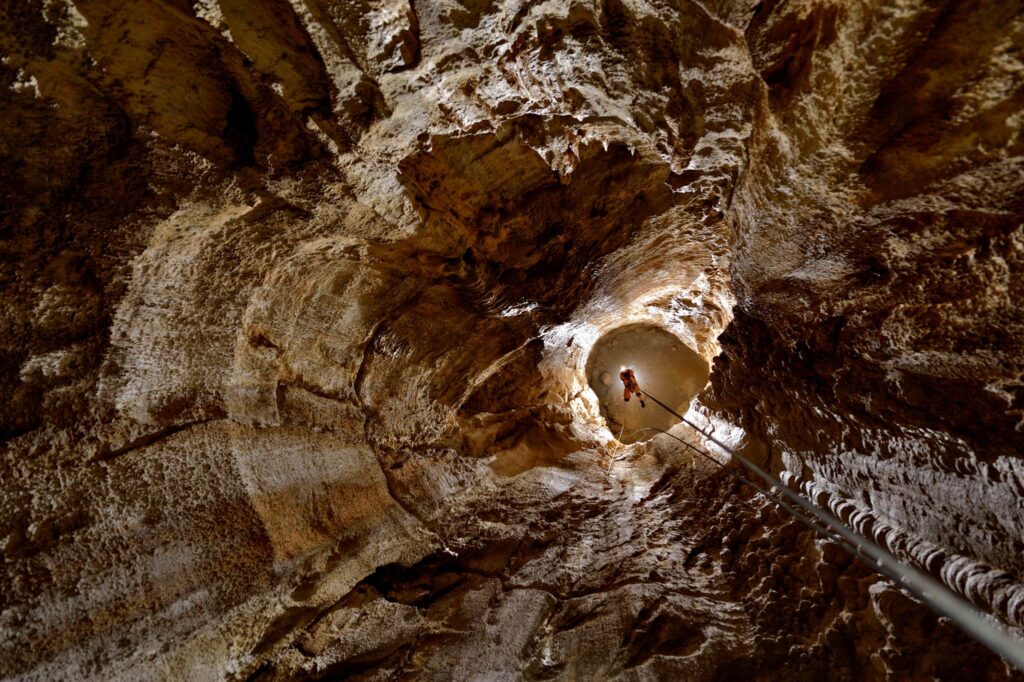
Today’s technical resources enable us to access passages that were previously difficult to reach. Lighting is more efficient, not to mention jumars (blockers), descenders and other means of perforation.
To date, the Gouffre Berger network has 11 known entrances and stretches over 45 kilometers.
Here are just a few of the explorations underway, including those in the new secondary networks.
In 1963, an English diver, Ken Pearce, crossed part of the terminal siphon.
Four years later, the same climber passed the second siphon and stopped at -1,133 m on a 4 m23 rise.
In 1968, two divers, Jérôme Dubois and Bertrand Léger, descended this projection and a small waterfall, stopping at -1,141 m.
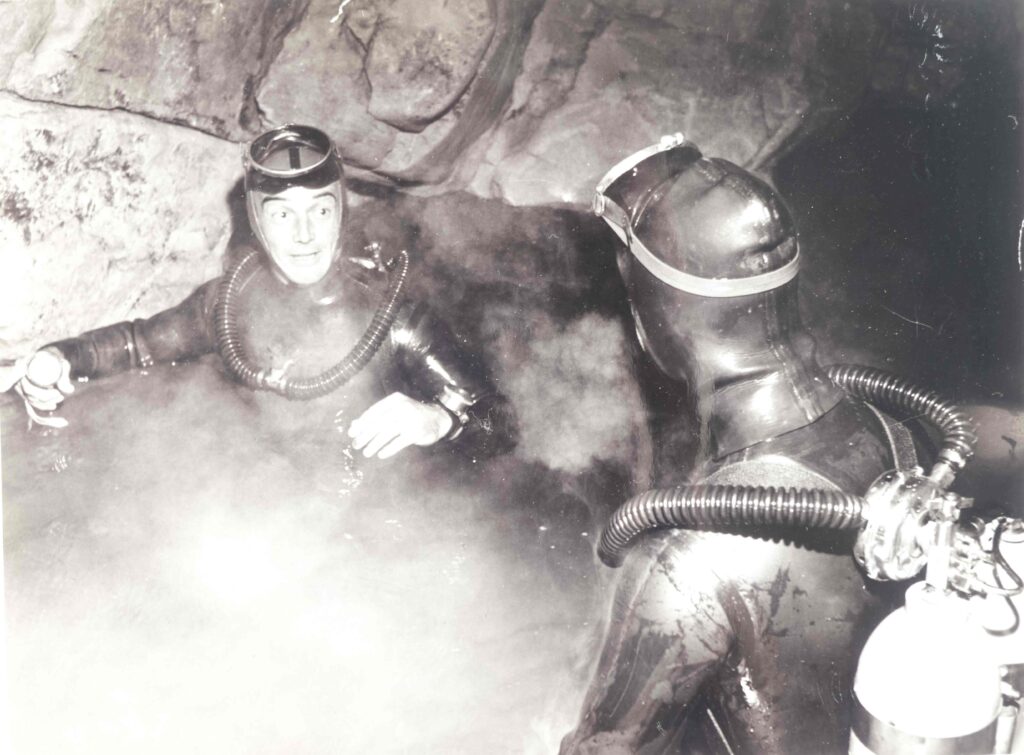
In 1968, a Belgian expedition discovered the Yves network. The expedition went smoothly at first, but the weather got in the way and successive twists and turns led to increasingly difficult and soon dramatic situations (see the book “Envers et contre tout”).
Fortunately, there were no fatalities, but the rescue and recovery of the wounded took several days.
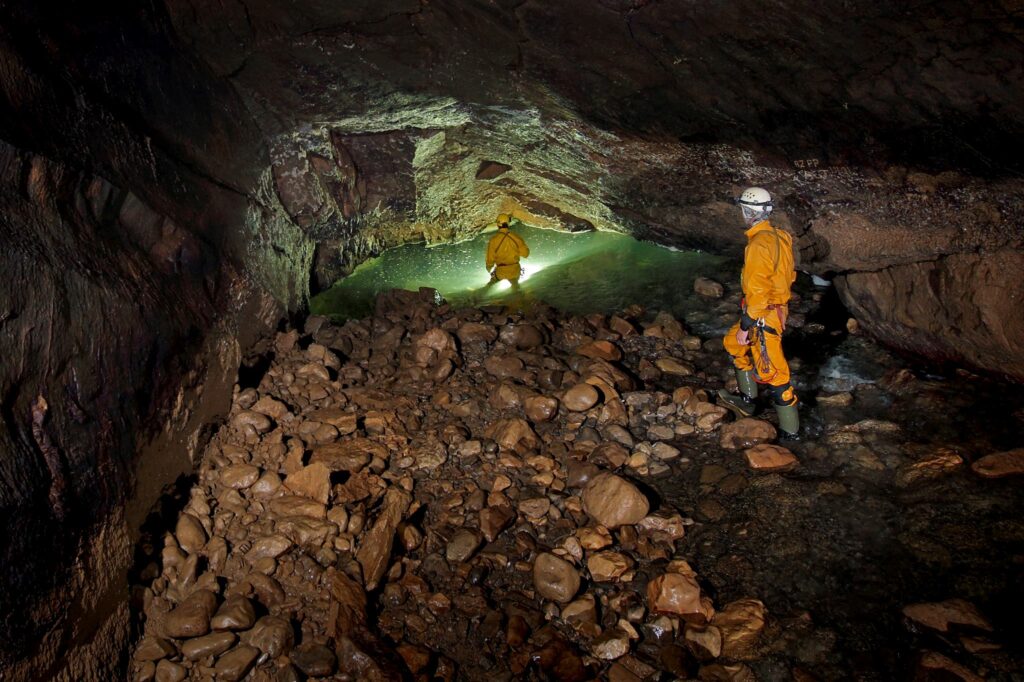
In 1978, a team comprising Patrick Penez, Frédéric Poggia and Frédéric Vergier dived into siphons 3 and 4, stopping at -1,148 m.
Frédéric Poggia later reached -1184, which seems to have been the terminus.
For twenty years, expeditions to continue the S5 dive all failed, winter and summer alike.
In 1981, the Gouffre Berger network comprised three entrances: the “Gouffre Berger”, the “puits Marry” and the “Gouffre des Elfes”. The “Scialet des Rhododendrons” was added on February 15 of the same year.
As this entrance is higher than that of Gouffre Berger, the depth of the network increases to 1198 m, for a total length of 20.4 km.
On the Berger side, the terminal siphon of the Rivière -1000 is located at -842 m and on the Fromagère side at -902 m. At the bottom of the Berger, a foreign expedition found an inflatable canoe coming from the Fromagère, which just accelerated the idea of “going and seeing”.
On a third attempt in October 1990, Frédo Poggia finally made the connection via an easy but branching siphon two hundred and five metres long and twelve metres deep. With just enough air to get out, he was very lucky, all the more so with an empty reel. Fortunately, he recovered the wire installed just before, in a rising chimney.
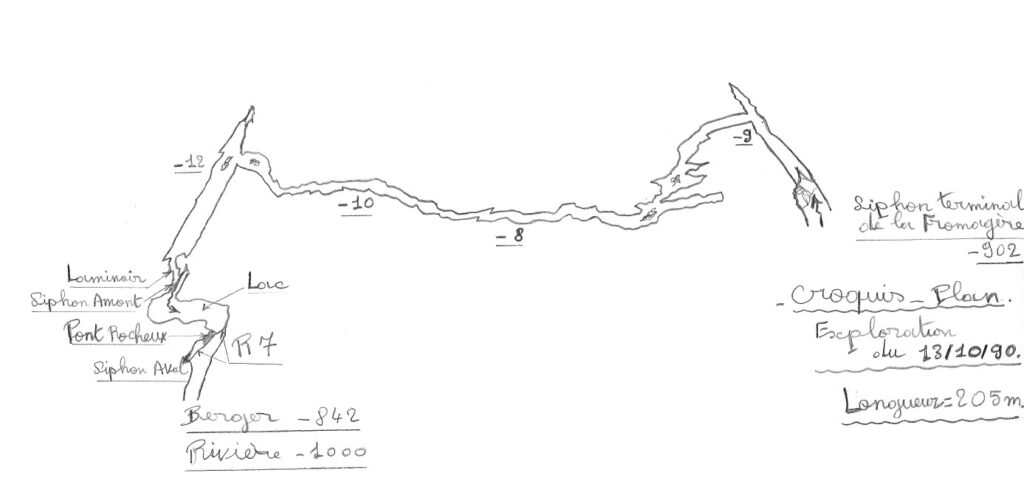
This junction enabled Gouffre Berger to reach a vertical drop of 1,271m.
In July 2003, Frédo Poggia dived to a depth of -52m. He came to a halt on a pebble filling, behind which he saw the continuation of a sloping gallery with the same type of dark, well-rounded pebbles from the Grand Canyon.
The last siphon seems impassable and still holds out. The depth of the Berger chasm is still -1,273 meters.
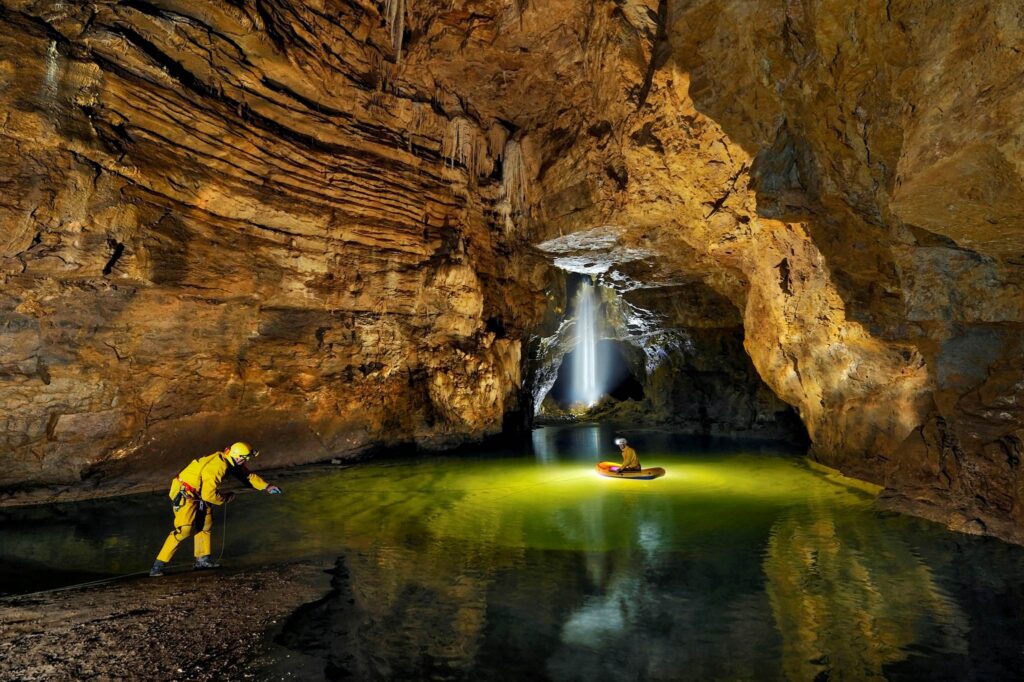
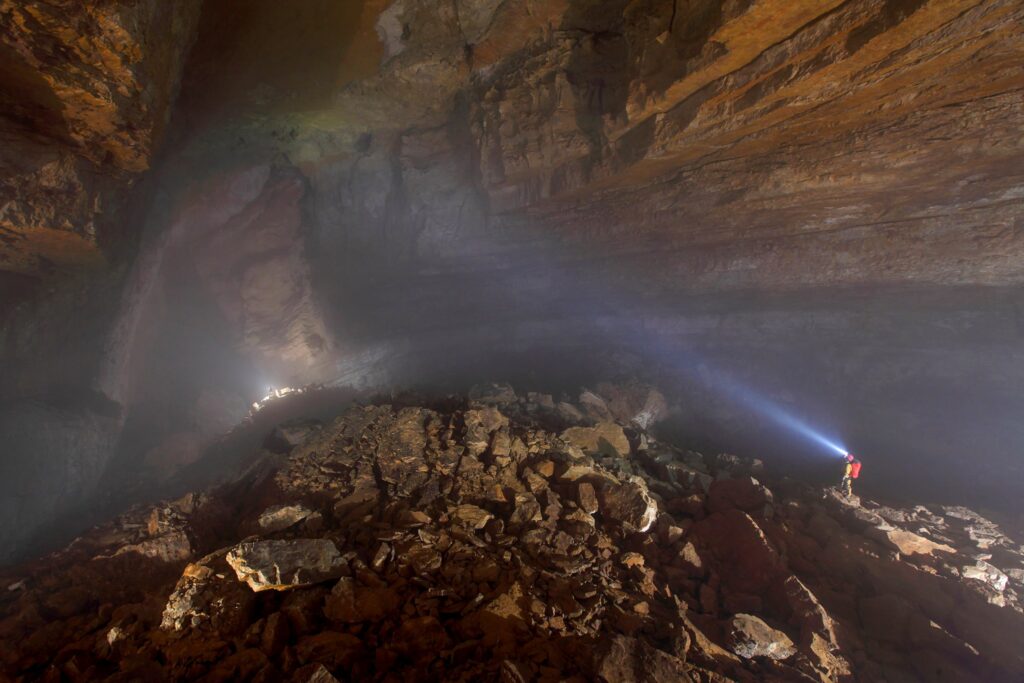

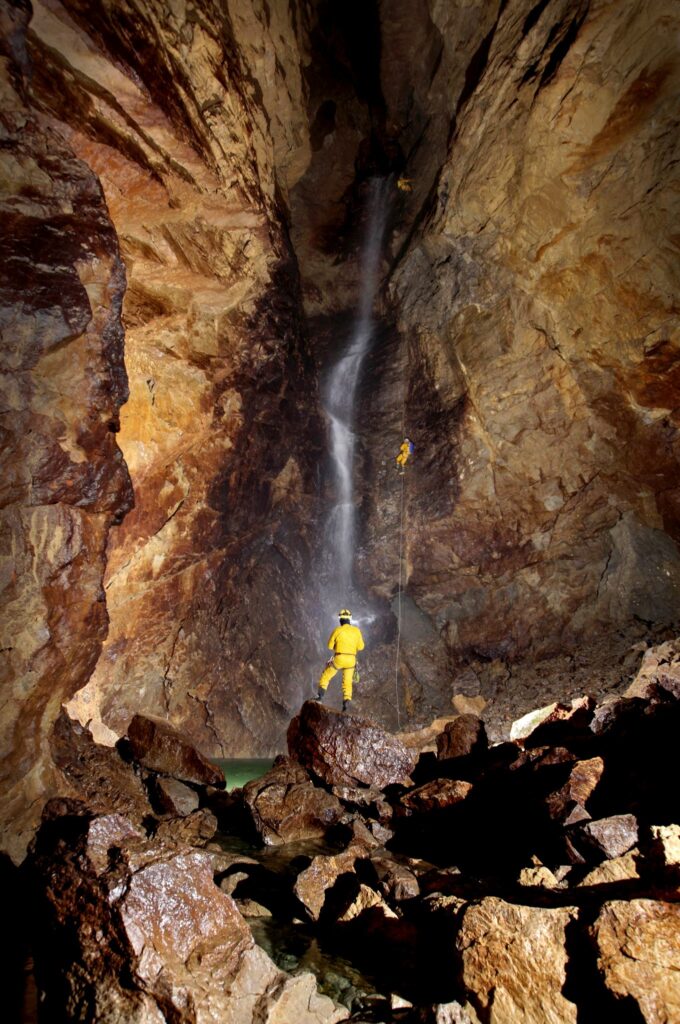
Other secondary networks are still being explored. The “brave motivation” and “hurricane” networks are being explored, as are the ceilings of the various rooms. They began in 2004 by the GSM Fontaine club on the Cascade Oubliée network at – 640 m. They were joined in 2007 by cavers from ASV and Gucem to explore the Vervacarius network at -740 m, with a 120 m climb.
This will result in 3km of new networks and, above all, these are the headwaters of the Etoile Sardine network.
The story doesn’t end ….
Collective of cavers discovering new networks :
Cavers team Montagne de Fontaine : Antoine and Thierry Guerin, Loïc, Barnabé and Alain Maurice, Pierre-Bernard Laussac, Thibaud et Oivier Galai, Prune Roche, Daniel Bruyère, Laurent Maillot.
Vercors Caving Association : Barnabé Fourgous, Luka Mater, Nico Baudier, Paul Mackrill, Brice Begou, Alax Faucheux, Pascal Guinard, Maud Simonet, Lionel Revil, Tristan Godet
Gucem : Manu Tessanne, Damien Gruel, Océane Haure, Thibaud Peyrouse, Benoit Urruty
Other cavers : Alexane and Patrice Roth, Arnaud Rufray, Christian Bouilhol, Cédric Clary, Camille Mavris, David Parrot, Tom Lallemand, Mathéo Maquet, Aymeric Bougnol, Gaël and Eric Fouroux, Jacques Morel, Isadora Guillamot, Edouard Dessaint, Damien Vignoles, Yannick Baux, Hugo Salgado Garrido
Video 50 years of caving at the Gouffre Berger – “Immersion” – In the footsteps of Fernand Petzl :
The Berger chasm is eternal
Photos : Collection Jean Lavigne, Guy Prouin, Robbie Shone
